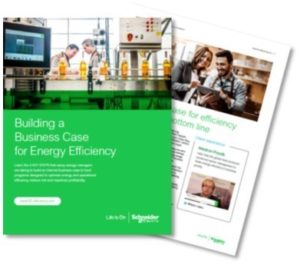
“Mounting pressure to reduce operating costs, coupled with shareholder and customer desire for improved sustainability, has made energy management an increasingly important priority for large companies,” said Louise Wallis, senior business development manager of Energy & Sustainability Services at Schneider Electric.
“However, these organisations are typically presented with services or technology solutions. And the answer for complex operations is often ‘both.’”
Accordingly, Schneider Electric introduced Continuous Efficiency in 2016, a suite of managed services and software that combines the knowledge of Schneider Electric experts across the globe with sophisticated tools and technology. The mix of onsite and remote support, as well as software, allows companies to uncover savings opportunities, implement changes at both the site and enterprise level, and constantly refine performance.
“Companies need to develop strategies, gather and analyse data, and make tactical improvements at both the enterprise and facility level. That’s the path to maximum savings and the opportunity to reinvest for growth,” said Wallis.
Now, Schneider Electric has partnered with a few of its global industrial clients to exchange best practices on how to successfully develop a business case for energy and sustainability. The resulting eBook contains the main findings from these collaborations with links to real-life success stories.
Further insights are shared on the Business Case Webinar on Demand.
Essentially, there are four key steps savvy energy managers are taking to build an internal business case to fund programs designed to optimise energy and operational efficiency, reduce risk and maximise profitability. These steps include:
- Securing buy-in from executives
- Mapping baselines of your entire portfolio
- Developing an opportunity profile and financial plan
- Ensuring ongoing performance and savings
Most energy efficiency programs can pay for themselves. It’s not uncommon for large multi-national companies to sustain a five percent energy reduction year-over-year to realise 30 percent or more in reduction over time – an enormous energy efficiency savings potential many companies are missing out on simply because they don’t have a shared corporate vision, a clear financial plan or a way to track and verify results.
The four key steps are a proven way to successfully build a case for energy efficiency, but they’re just the beginning.
To be truly successful, companies need to develop a continuous improvement culture where efficiency becomes as second nature as labour, materials and production planning. It must be woven into the fabric of the operation, and integrated as one strategy and one set of goals for the company.
To learn more, download the full eBook now.
Follow us at @EnergystMedia. For regular bulletins, sign up for the free newsletter.



